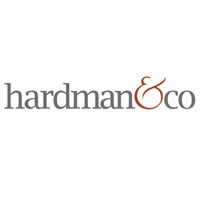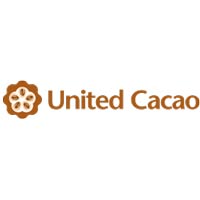Hardman & Co Managing Director of Agribusiness Doug Hawkins caught up with DirectorsTalk to discuss the $300 billion cocoa brand value, the upstream sector, pressures for change, opportunities for ordinary investors and Hardman & Co.’s role in the cocoa sector
Q1: Doug, can you tell me what it is about cocoa that’s promoted more than $300 billion of brand value?
A1: Well I guess it comes from the fact that it is an affordable luxury I suppose, it’s a treat, it’s an indulgence that people find it easy to carve out of their budgets and with clever positioning the brands, the dominant brands, have managed to accumulate significant market share and hence buying power and very strong distribution platforms. The combination of both our taste for the treats and the efficiency in which the major brands have worked has led to the development of quite outstanding value, I mean this is about .4% of global GDP.
Q2: Now we can see with the Mondalez bid for Hershey and the previous consolidation amongst the processors, whilst there’s a huge concentrated power in the downstream and midstream segments of the cocoa value chain the upstream sector has no economic power or influence. Do you think that’ll change?
A2: That’s a big question, let’s just rehearse some of the numbers, if Mondalez do succeed in landing Hershey, and it by no means is a done deal because the Hershey Trust controlling around 80% of the voting rights stands in the way, but if they were to they would command something like 18% of the global confectionary market, that’s a huge share, 18% of a global market, Mars for example we estimate has got about 12% of the global market in chocolate products. So these are huge empires and when you look upstream, right upstream because there are huge empires in midstream, look at Barry Callebaut with the largest supplier of industrial chocolate, the largest processor of cocoa beans in the world, but when you look upstream you’ve just got something like 5 million small holder/subsistence farmers who are price takers and these combines get bigger their buying power gets greater and this puts a lot of pressure on their suppliers, whether it’s cocoa suppliers or sugar suppliers or even milk suppliers. So will it change at the upstream end of the cocoa sector, there are signs actually that it might, one of the problems for the brands given their global reach and their dominance is that consumers who are as sensitive to social issues and environmental issues expect the brands to have clean hands and the issues of sustainability for cocoa production is a big one. We’re seeing significant deforestation in parts of Africa in the chase for growth and supply, there are continual stories of unethical labour practices, child labour, slavery and these are things which the big brand will want to avoid. So there is some interest in encouraging, from their point of view, the upstream sector in developing some more professional suppliers.
Q3: So Mars recently acquired a high tech cocoa plantation in Ecuador, what’s happening in the producer sector and why is there so much pressure for change?
A3: Well I mean one thing, and you can see it if we had a video here and I’m sure we can send you a chart, if you were to look at the key industry indicator, the stock to grindings ratio you will see the number of beans and stocks relative to the grinding on those beans is falling all the time, it used to be high like over 70 toward 80% of beans used were held in stock, now that’s down under 40%. This narrowing of supply and demand is squeezing up the cocoa price and if you look at the price since about 1999, you can see that notwithstanding the sort of volatility of course you get with all soft commodities, it’s on a rising trend, lowers bottoms as we say when looking at charts, always on lower bottoms. So the cocoa price is being squeezed up as demand growth exceeds supply growth and as I mentioned before some of that supply is at the expense of the environment and that’s causing the brands to say look we don’t want to pay too much for our cocoa, we want to be certain we’ve got supply and we want supply of coca that comes without bad risks to our reputation.
Q4: You recently wrote about a gold rush in the upstream cocoa sector, are there opportunities for the ordinary investors to join this rush?
A4: There is a lot of money going into this sector, I mean relatively a lot of money, I mean what are we talking about, maybe $50-100 million a year is now going into the upstream sector and this is unheard of, for decades, literally decades, there’s been a fraction of that, just a tiny fraction of that invested. So there’s been a sea change and of course that sea change has been precipitated by the very trends that we’ve been talking about, the fact that there has been a squeeze between supply and demand so there are now serious companies investing in upstream production of cocoa. As these develop, there will be opportunities for investors to acquire stakes in them and we’ve seen 2 come to market already, we’ve got United Cacao Ltd SEZC (LON:CHOC) which is listed on the London AIM from the end of 2014 and last year of course we saw, coming to the Brussels Euronext, KKO which is beginning a plantation in the Ivory Coast. So we’re beginning to see these offerings coming forward so I think over time there will be opportunities for investors, as the case for commercial production of cacao is proven.
Q5: Hardman Agribusiness is frequently mentioned in the media for its views on the cocoa sector, what is the company’s role within that cocoa sector?
A5: Ok, so with our business we seek to provide advisory services to both sides of the investment equation, to projects looking for finance and for investors looking for investment opportunities, typically in upstream and midstream sectors and that covers a number of crops because we have a focus on a number of tropical tree crops from citrus through coconuts, palm oil, rubber and cocoa. So we seek to help both investors and projects, put their money to work in the sector.


